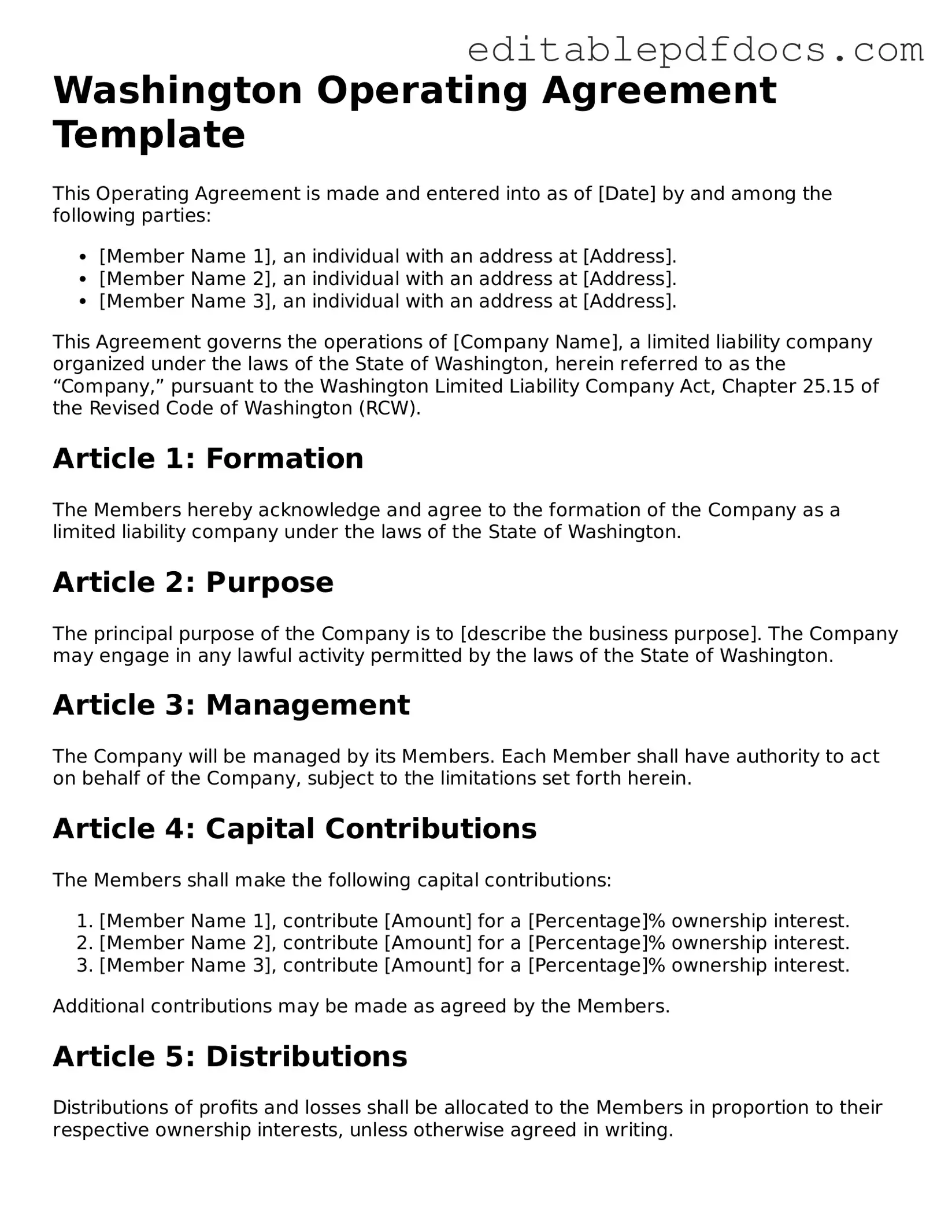Filling out the Washington Operating Agreement form is a crucial step for any business entity. However, many people make common mistakes that can lead to complications down the line. Understanding these pitfalls can help ensure that your agreement is both effective and compliant.
One frequent error is failing to specify the management structure. Whether your business is member-managed or manager-managed, this detail is essential. Without clarity, disputes may arise about who has the authority to make decisions, leading to confusion and potential conflicts among members.
Another mistake is not including a clear purpose statement. The purpose of the business should be explicitly stated in the agreement. This statement outlines the goals and objectives of the company, providing a framework for operations. Omitting this can create ambiguity about the business's direction and objectives.
People also often neglect to outline profit and loss distribution. Clearly defining how profits and losses will be allocated among members is critical. If this section is vague or missing, it can lead to disagreements and dissatisfaction among members, particularly when it comes time to distribute earnings.
Additionally, many individuals forget to address buyout provisions. These provisions are vital in the event that a member wishes to leave the company or if circumstances necessitate a buyout. Without a clear buyout process, the remaining members may face challenges in managing the transition smoothly.
Another common oversight is not updating the agreement regularly. As your business evolves, so should your Operating Agreement. Failing to revise it can result in outdated terms that no longer reflect the current state of the business, which can lead to legal complications.
Lastly, many people overlook the importance of having all members sign the agreement. An unsigned agreement may not hold up in legal situations. Ensuring that every member reviews and signs the document solidifies its validity and can help prevent disputes in the future.
